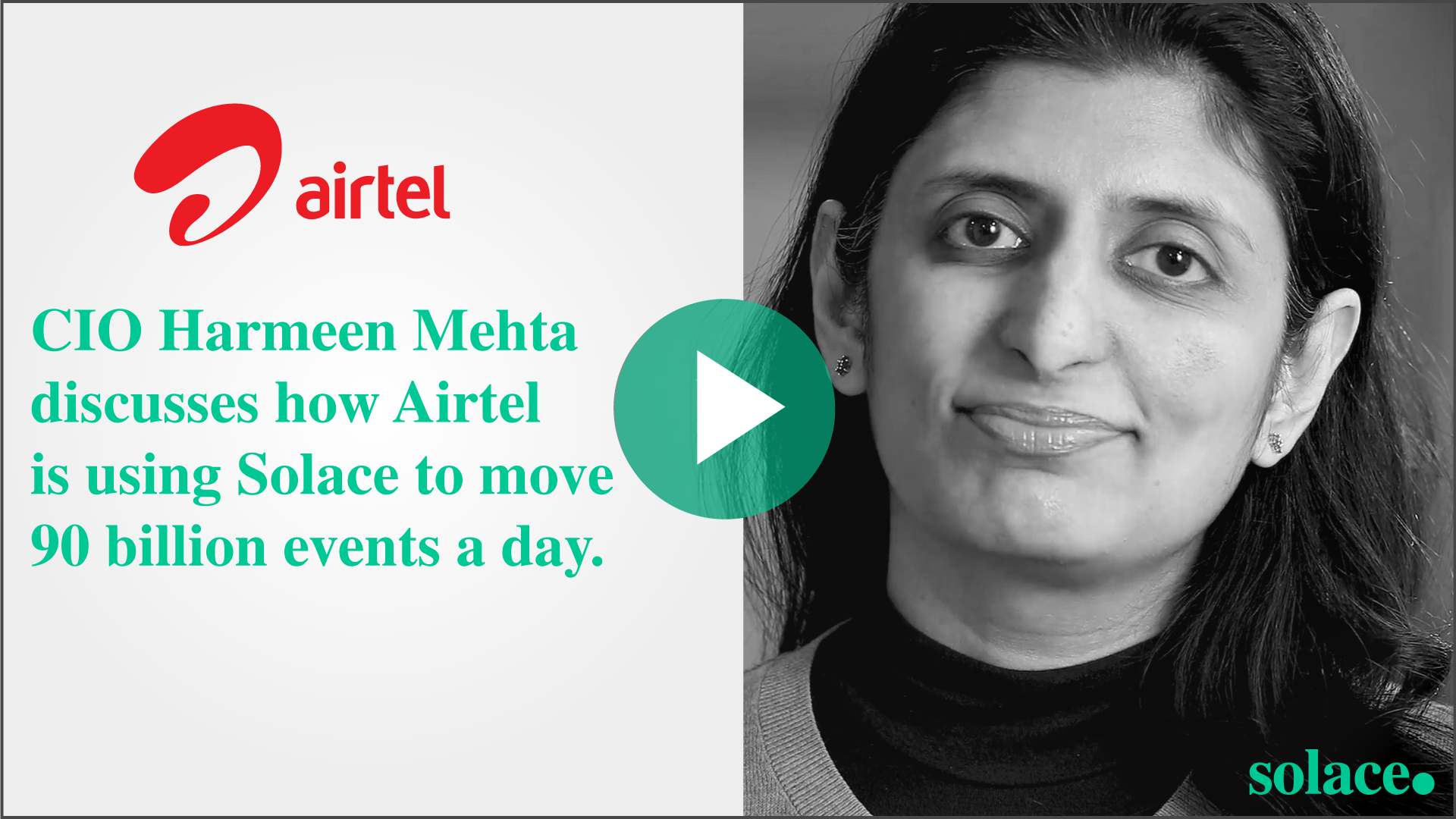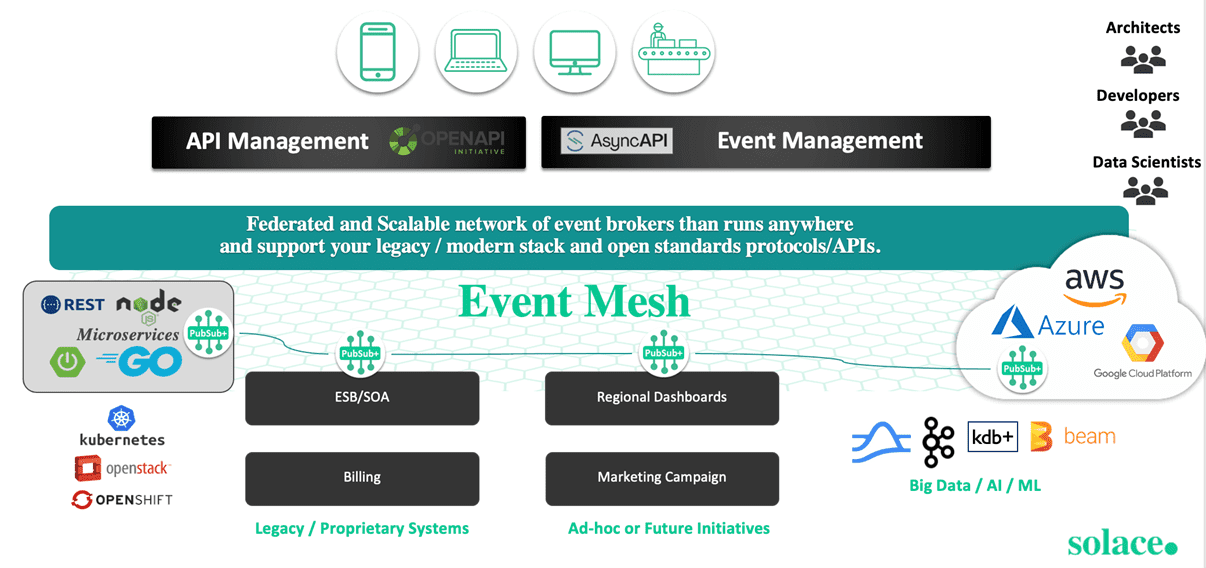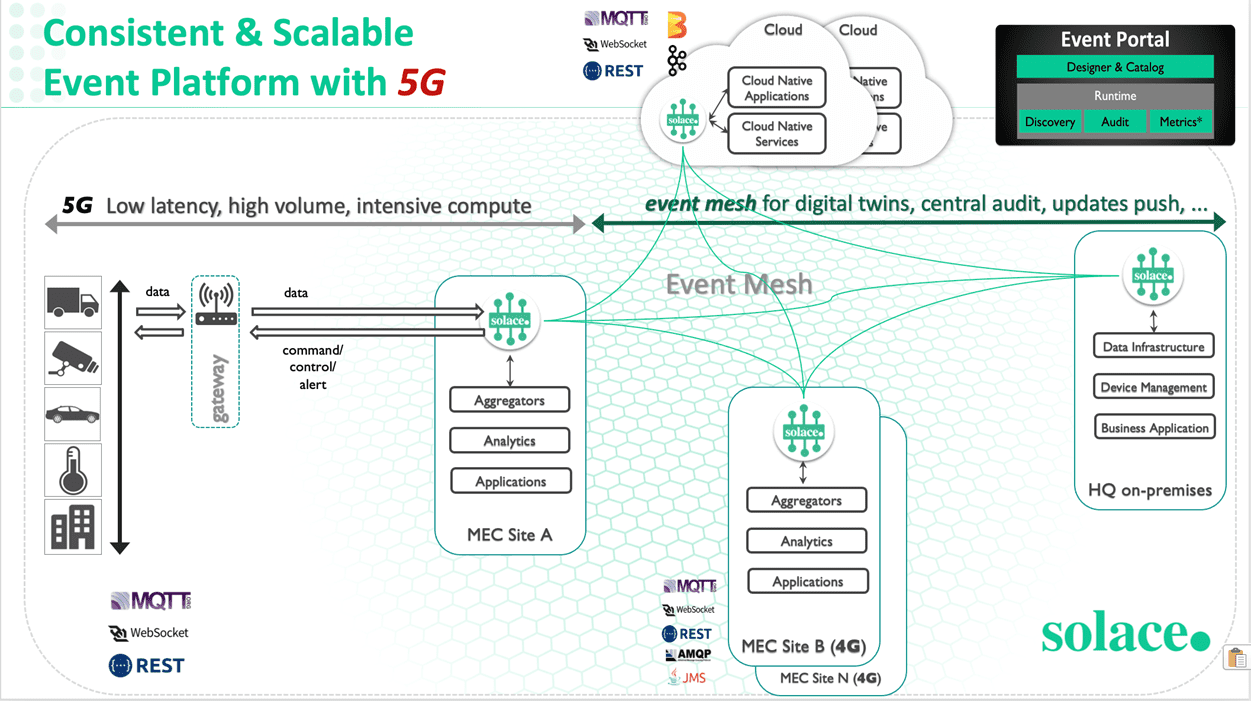This blog is based on contributions from Mona Bachsin, Ari Hermawan and Mike Hayward.
The telecommunications industry has long faced disruption by tech giants and nimble new competitors, especially in the prepaid markets. To face this competition, they set out to increase customer satisfaction, accelerate order-to-activation cycles, and reduce time to market for new services.
In doing so they face technical challenges such as implementing hybrid cloud, edge computing and network rollout and its consumption. These challenges can come from the need to reduce cost of operations or reduce risk but can also come from the strategy to march ahead and deploy next generation of network capability such as 5G and IoT as a service.
Traditional Challenges
Thanks to the high cost of acquiring new customers, operators need to keep churn to a minimum by keeping their existing subscribers happy through loyalty programs and increasing their Average Revenue Per User (ARPU) by offering services that provide additional revenue and a deeper customer experience.
A recent McKinsey study showed 5G will enable providers to increase their ARPU by upwards of 20% as they offer new services which are unavailable today. Subscribers want services at their fingertips and many of them, and they don’t like to wait. They want responsiveness and reliability. They want consistent omnichannel experiences when interacting with your business and associates – whether it be in store, online or on the go via a mobile app.
They’re also increasingly demanding. Now it’s about paying for movie streaming platform, or buying magic potions in a game, or paying for that cup of coffee next door. This is where event-driven technology plays a very important role enabling these interactions to take place in real time – therefore maximizing the revenue opportunity.
What do telcos need to do?
Telcos need to make sure that order-to-activation process is reliable and quick; and notifications/updates are delivered in timely manner and not lost. Delivering new products, and onboarding new partners must not take longer than competitors.
They also need the agility to embrace and manage next-generation content and services. They need help coping with the ever-increasing volumes and remove friction points and incompatibilities associated with legacy infrastructure and new data sources.
At the same time, they need to be able to quickly integrate new systems as part of new capabilities acquisitions. This means integrating old and new worlds, legacy and modern, in real-time and so business remains as usual. Watch the video below to see how Airtel is helping connect over millions of citizens in India by having modernized their system and moved to being event-based.

The integration of new applications and information sources is a key enabler of competitive success for a telco, with most operators already having some capabilities in this area. Integration generally already exists between the channels, partners, enterprise applications … all the way to the multitude of BSS and OSS systems.
For many, however, those capabilities are no longer enough. Telcos today need to capture, store and add value to the increasingly massive amount of data being brought into their ecosystems – from data warehouses, ERP systems, and increasing number of SaaS applications.
Key Capabilities When Modernizing Systems
Application and infrastructure modernization initiatives today include modernization of middleware and integration platforms. Apart from ageing technology, there are few key capabilities that are sought after and crucial to overcome the challenges faced by telco operators today:
- Support for more open standards APIs and protocols, enabling faster and easier integration with new or external systems.
- Enable distributed integration, not centralized behind a firewall. Allow near integration points with applications running on different sites and/or cloud.
- Be everywhere, different vendor stack and various cloud.
- Enable architectural patterns more suitable for distributed and varied technologies running on different environments.
At the same time customers are raising the bar for satisfaction. A shift of paradigm is needed.
For a legacy order management system, the whole process from order to activation is orchestrated within a single system, distributing and sharing data between the online product catalog, payments, campaign offers, and provisioning to necessary systems. As volume and the number of distributed systems grows, this can create a few issues:
- Capacity: How many order requests can the system handle concurrently before it starts to slow down and choke, due to the fact every single request is being kept on the system until the entire chain of orchestration is completed – or failed.
- Agility: How fast or easy it is to introduce another system that needs data from any of these ordered steps? Maybe simply a new notification system or a real time dashboard for marketing campaigns? It’s not so easy to bolt on new ‘steps’ into this orchestration and some would resort to yet another point-to-point integration or database call to move the needed data from one system to the other.
Telco Leaders Know the Secret: Being Event-Driven
Systems were historically built as database-centric, where processes write records for others to read (query), and process later. Systems needed to ask, to go and get the records they need in what’s called a request/reply manner.
What if systems could instead register their interest in records of that kind, and have that data delivered to them as soon as the relevant event occurs? This is the premise of event-driven architecture (EDA), which uses the publish/subscribe message exchange pattern to meet the needs of organizations who know they need real-time context, the more they need to adopt an event-driven mindset.
Here are some examples of events within the telco world that may interest more than one subscriber and thus offer greater value downstream by making this information available, and sharing it in real time:
It’s important to recognize that each of these primary events can lead to a series of Let’s look at these events again from an EDA perspective:
- Primary Event: A subscriber places an order for the hot new phone with a premium plan.
Secondary events: The postpaid order management system kicks off the order fulfillment, the iPhone campaign system gets updated, the inventory and delivery process from the manufacture/distribution partners get notified, etc. - Primary Event: A call is dropped.
Secondary Event: The network monitoring system knows about it, the premium subscriber system kicks off a compensation program, the loyalty point and provisioning systems get notified for any fulfillment action. - Primary Event: A subscriber has just used up to 90% of their available data plan.
Secondary Event: A campaign system sends a reminder an offer for a discounted data plan. - Primary Event: A balance top-up/reload is completed via a traditional channel.
Secondary Event: The mobile app gets pushed notification of the status, the loyalty system gets updated, provisioning of bonus packages/products kicked off.
There is rarely just one system that should be alerted of a particular event occurring. Rather, just by virtue of making this event possible to ‘subscribe to’, it provides a way to unlock the value of this event data within a system and share it across the organization to other subscribers who could benefit from knowing it has occurred.
Connecting your Systems with an Event Mesh
For most organization that were born before the digital age, the weight of their legacy infrastructure is a barrier to their digital transformation and to becoming event-driven. For many, the complexity and the costs have always exceeded the benefits, making the adoption of EDA impractical. They needed an easier way – they needed an event mesh.
An event mesh is a layer of infrastructure that routes events from where they are produced to where they need to be consumed – regardless of the system, cloud or protocols involved. If you’re familiar with a service mesh, event mesh is a similar concept but for the event-driven world. An event mesh is created by connecting event brokers across environments, which enables applications in one environment to receive event notifications created by applications in any other environment – as long as both applications are connected to a local event broker.
Whether you’re talking about a platform modernization initiative or streaming data to external partners or SaaS analytics applications, an event mesh is the best way to achieve the promise of real-time, responsive operations across environments and geographies.
On top of that, the event management capabilities of an event portal help organizations manage both synchronous APIs such as REST-based APIs and event-based APIs for centralized discovery of events. Think of searching for events that represent prepaid top-up/reload events for a particular product or specific area/region or even denominations.
By adopting EDA and leveraging an event mesh, launching new initiatives is easier with readily available information of what events are there to be reused. Implementation is also less complicated as new applications can run from anywhere and built with various technology stacks while leveraging multiple proven open standards APIs and protocols.
Enabling Telco Transformation with an Event MeshLearn how an event mesh helps telcos enable real-time event streaming across their entire value chain, thus improving operational efficiency and customer experience, and enabling new revenue opportunities.
Maximize the Potential of 5G with an Event Mesh
The flood of new 5G data is necessitating a change in the way businesses architect their IT systems and manage their infrastructure. The traditional architecture that relied on feeding everything back to a centralized data center is not the best strategy for processing and quickly responding to ever-growing torrents of information.
To capitalize on 5G, telcos need a strategy for processing information at the edge of the network to enable applications that require ultra-low latency to get the performance they need.
They also need to reliably share data throughout the entire distributed enterprise that spans edge, cloud and on-premises applications. While multi-access edge computing (MEC) promises leaps in terms of latency, bandwidth, and computation, there are still some resistance around adoption simply because not all applications can run in isolation. Some applications need to run computation near the edge, but at the same time require connectivity back to HQ, or to other sites – 4G or 5G, or even to other clouds.
With an event mesh in place, telcos can easily:
- Ingest events from IoT devices and choose whether to keep them at the edge or send them into the network
- Use multiple public cloud services, from different public cloud providers
- Add, remove and move applications throughout the system, without disruption
- Migrate to the cloud in a stepwise fashion
- Set up robust disaster recovery, taking advantage of multi-cloud architectures
Think of a Solace-enabled event mesh as the backbone of communication between these multiple sites and clouds. Stream of events in real time can still flow efficiently between edge applications with their digital twins, for telemetry or push updates, or regulatory audit. And all those events can be discovered centrally from the event management capabilities depicted on the top right. Part of the Solace PubSub+ Platform offering, PubSub+ Event Portal allows you to capture events flowing across all of your PubSub+ Event Brokers (appliance, software, cloud) across cloud and on-premises environments.
Event Portal – An API Portal for EventsAn event portal is a toolset that developers can use to discover and reuse events across applications, lines of business, and organizations.
Where should a Telco get started with building an event mesh?
A Solace-enabled event mesh can be built from pilot-scale and expanded incrementally, whether you chose to start with a fully managed Cloud services, or on your own software platform, or even with the purpose-built appliances for greater capacity and reliability.
Getting started with event mesh does not mean rewriting your applications from scratch, rather you can pick and choose from open standards APIs or protocols such as JMS, REST, MQTT, or WebSockets, and start liberating your events to the event mesh for others to subscribe to. Gradually onboarding new events to the platform does not require yet another implementation projects, just publish and manage your events.
The blog post Six + 1 Steps to Implement Event-Driven Architecture suggests that event-driven architecture can be implemented via these six steps:
- Assess Culture, Awareness, and Intent
- Identify Real Time Candidates
- Build Your Event-Driven Architecture Foundation
- Pick Pilot Application and Event Catalog
- Get a Quick Win
- Rinse and Repeat + Scale
Or, you can dive right into the details by downloading the free Solace guide: Architect’s Guide to Implementing Event-Driven Architecture
Explore other posts from categories: Business | For Architects | Use Cases

 Alecia O'Brien
Alecia O'Brien


